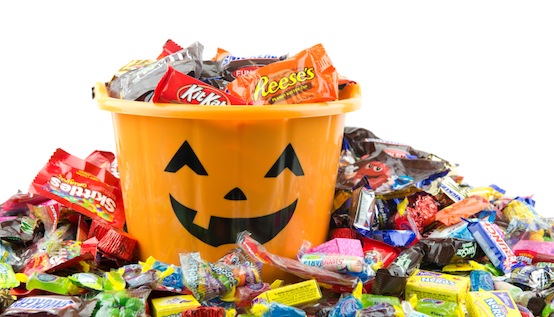
By: Abigail Nath, Staff Writer
“Don’t take candy from strangers” is quite possibly the number one rule every child knows. Except, on Halloween…because on Halloween, taking candy from strangers is the number one goal.
Thus the reason nearly every parent has also told their child to let them “inspect” candy before it gets gobbled down…because the other candy rule that every child becomes aware of, is that Halloween candy is the number one way criminals seek to kill victims. Except, it’s not. It never has been. And with adequate research, only one case emerges with a “candy killer,” and even that was not by a stranger.
O’Bryan v. State was a criminal case that arose in Texas.[1] A man was convicted and sentenced to death for attempting to kill three children. His own son, Timmy, was the only success to his heinous crime. The weapon used? A pixie stick…
In the only reported case of trick-or-treat-candy poisoning, Ronald Clark O’Bryan put cyanide into a pixie stick that he then gave to the three children he took trick-or-treating. The giant pixie-sticks contained twice the amount of the fatal dosage of the poison needed to kill an adult.[2] After the activities of the night, Timmy O’Bryan elected to eat his large pixie-stick at the urging of his father. When he complained that it tasted bad, his father gave him some kool-aid to wash the poison down.[3] Shortly after, Timmy began vomiting violently and foaming at the mouth. An ambulance rushed Timmy to the hospital, but it was already too late.
The evidence of the 1974 murder was piled high against O’Bryan: indebtedness, suspiciously high insurance policies on his children, continuously conversing about fatal dosages of cyanide, and changing accounts of where the pixie-stick candy came from.[4] The Texas death jury found in favor of the prosecution, and O’Bryan was sentenced to death. While some eerie accounts have stated the “Candyman” was executed on October 31, 1984,[5] he was actually executed by lethal injection on March 31, 1984. Either way, there is still an air of Poe-style poetics to that fact that the poisoner was killed by poison.
While other cases have occurred that have spurred the rumors of death by Halloween candy, they have mostly been half-truths manipulated by the media to create edging news. Multiple cases exist of children dying after eating Halloween candy, but each autopsy showed natural causes to be the reason for the tragedy.[6] In another 1970 incident in Detroit, a story emerged that a little boy died after eating Halloween candy laced with heroin. After a small investigation, it was discovered that the boy ate actual heroin found in his uncle’s house, and not candy. [7] The media gave much attention to the first horror of the story, but then shied away from reporting that it actually was not heroin-laced candy. Instead of reporting the whole truth, they report just the facts that play on our already-existing fears. Likewise, after the 9-11 terrorist attacks, stories emerged of children receiving “cryptic, terrorist-related messages in their treats.”[8] Despite this, medical reports show that while child-safety is a concern on Halloween, it is more likely that a fatality will come from a child being struck by a car while walking house-to-house, rather than by poisoning from a stranger. [9]
I’m not quite sure what came first, the Halloween candy killer or the fear of Halloween candy. Either way, I wouldn’t go too far with the fear of death by candy this year, unless your fear is a sugar coma.
[1] O’Bryan v. State, 591 S.W.2d 464 (Tex. Crim. App. 1979).
[2] Id. at 469
[3] McQuade, Joe, “Countdown to Death. The Houston Chronicle. <http://jclass.umd.edu/archive/newshoax/casestudies/crime/CrimeHalTim7.html>
[4] Id.
[5] Marquart et al, The Rope, the Chair, and the Needle: Capital Punishment in Texas, 1923-1990. Austin: University of Texas, 1998. 149. Online.
[6] Best, Joel. “Halloween Sadism: The Evidence.” <http://www.joelbest.net/> October 24, 2014.
[7] Id.
[8] Id.
[9] Morbidity and Mortality Weekly Report. 1997. “Childhood Pedestrian Deaths During Halloween–United States, 1975-1996.” 46 (October 24): 987-90.